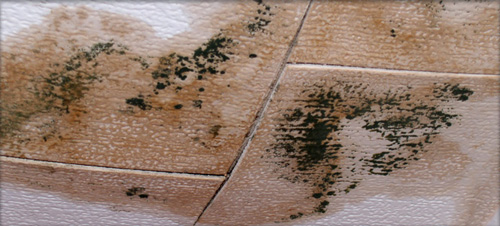Rental properties, such as apartments and rented homes, are as vulnerable to mold as any other residence. Cleanup of spores, when mold growth is excessive, can be a costly fix. Mold contamination is extremely problematic to landlords, who lose rent, are footed with bills for expensive property damage, and who are sued by tenants who suffer health issues from mold-related illnesses.
Problems with Mold
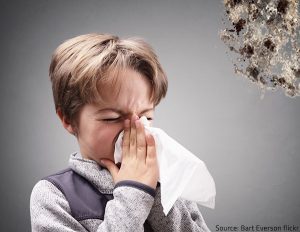 Mold, a fungi, is a natural part of the environment and commonly thrives in the great outdoors. Seeming to be a mild irritant at first, mold becomes increasingly damaging when it flourishes indoors. Mold spores that find a moist place to develop inside residences pose as a serious cause for concern for two important reasons: health and property damage.
Mold, a fungi, is a natural part of the environment and commonly thrives in the great outdoors. Seeming to be a mild irritant at first, mold becomes increasingly damaging when it flourishes indoors. Mold spores that find a moist place to develop inside residences pose as a serious cause for concern for two important reasons: health and property damage.
Individuals who suffer from respiratory conditions are especially prone to health-related problems due to mold growth. Even those who are healthy experience watery eyes, a runny nose and coughs that are triggered by mold spores.
Aside from health issues, property damage occurs when mold takes hold. Porous materials, such as wood, drywall and carpeting sustain mold spores when even slightly damp. Moisture-rich areas nourish mold growth. Mold eats away at surfaces, behind walls and under floorboards, weakening the materials it covers and becoming a hidden source of structural damage.
Mold, too, has an unpleasant stench, which makes it readily recognizable within an apartment or rental home. Black splotches, like those spreading across the underneath of a sink or along bathroom walls, are a visual indication of the presence of mold.
Three distinct types of mold are commonly found indoors, according to HGTV:
Aspergillus – This type of mold is allergenic. Spores are found inside air conditioning units.
Cladosporium – Black or dark green cladosporium mold spores grow behind toilets, on painted surfaces and fiberglass air ducts. This strand of mold is typically nontoxic to humans, but can spur allergic symptoms in vulnerable individuals.
Stachybotrys atra – This is a rare mold species; however, it still exists and can be identified with its greenish, blackish coloring.
Preventing and Reacting to Mold
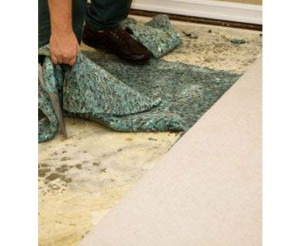 Typical areas mold spores find habitable in rental homes include areas that receive less ventilation, such as bathrooms. A leaky pipe can drip moisture underneath the kitchen sink, allowing mold to thrive alongside and beneath the cabinetry. Drafty windows release moisture inside, giving mold spores a reliable place to feed. Mold also can find a point of entry from heating and air conditioning units.
Typical areas mold spores find habitable in rental homes include areas that receive less ventilation, such as bathrooms. A leaky pipe can drip moisture underneath the kitchen sink, allowing mold to thrive alongside and beneath the cabinetry. Drafty windows release moisture inside, giving mold spores a reliable place to feed. Mold also can find a point of entry from heating and air conditioning units.
When any species of mold grows inside your apartment or rental unit, the landlord should be notified immediately. Landlords are responsible for ensuring that tenant homes are habitable. Landlords are also responsible for notifying tenants of any existing mold within the rental unit prior to the signing of the lease. Examine your lease to understand who is responsible for resolving circumstances around mold growth.
Laws offer some level of protection when it comes to mold growth within rental units. State laws vary and change over time. Usually, in all 50 states, state law outlines that landlords are responsible for the cost of mold remediation if the mold growth occurs due to a fault of the landlord, such as failing to repair a leaky roof or fix a broken water pipe that caused mold growth.
The responsibility of mold cleanup falls upon the landlord’s shoulders if the mold presents a health hazard or makes the property uninhabitable. However, if the mold growth resulted from the tenant’s actions, the landlord can charge the tenant for the cost of mold remediation services. For instance, a tenant who leaves a patio door ajar during a spring storm is responsible for any mold growth that results under the damp carpeting or floorboards.
As mentioned, read your lease for details about how to handle the presence of mold within your home. Renters can also find details about state laws from local Environmental Protection Agencies or the State Department of Public Health.
Mold Testing
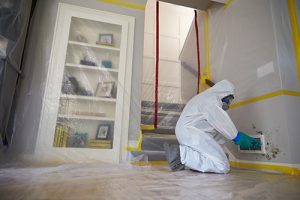 If you suspect mold growth in your rental property, two options can confirm whether or not mold has taken hold. A do-it-yourself mold tester provides dependable results. A certified mold remediation company can also be called in to offer an accurate reading of the level of mold within your rental home. Renters may wish to ask their landlord to cover the expense of hiring a professional to evaluate any possible contamination of mold within the property.
If you suspect mold growth in your rental property, two options can confirm whether or not mold has taken hold. A do-it-yourself mold tester provides dependable results. A certified mold remediation company can also be called in to offer an accurate reading of the level of mold within your rental home. Renters may wish to ask their landlord to cover the expense of hiring a professional to evaluate any possible contamination of mold within the property.
When mold is obvious, take steps to document its presence. Clearly photograph the mold, or take well-lit videos showing evidence of the growth. Any leaks in close proximity to the mold should also be photographed or captured in video. When you notify your landlord about the mold within your home, keep detailed notes about the conversation, including the date and time of the call, as well as records about what was discussed to resolve the mold issue.
As a renter, you can take steps to prevent mold within your apartment or rental home. Humidity levels maintained at 50 percent or less efficiently control mold growth. Request immediate maintenance as soon as you discover faulty plumbing, a leaky roof or any other seepages that allow moisture to enter the home. Prevent the buildup of condensation around windows, piping or exterior walls with insulation. Any damp carpeting must be dried thoroughly and immediately to avoid mold growth underneath. Mold growth can occur as quickly as 48 hours.
Professional Mold Remediation
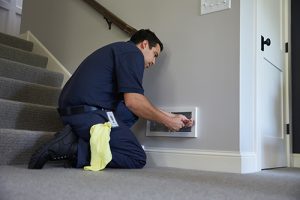 When mold contamination is evident inside your rental property, a professional mold remediation service is best suited to clean up the damage. Attempting a do-it-yourself cleanup only scatters the mold spores to other areas of the home, spreading the contamination.
When mold contamination is evident inside your rental property, a professional mold remediation service is best suited to clean up the damage. Attempting a do-it-yourself cleanup only scatters the mold spores to other areas of the home, spreading the contamination.
ServiceMaster Disaster Restoration and Recovery, reliably serving the San Francisco community, is well-equipped to return your rental unit to its original, mold-free condition. Skilled mold remediation technicians utilize advanced mold detection instruments to conduct mold inspections that precisely evaluate the level of mold spores within your rental property. Specialists then professionally clean up all evidence of mold with time-tested techniques that leave your unit mold-free for the long run. Companies like ServiceMaster Disaster Restoration and Recovery handle mold problems of any size, from less than ten square feet to expansive areas that require largescale procedures.
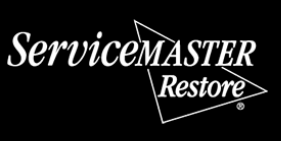
Steve VanDenBerg is the owner of ServiceMaster Disaster Restoration and Recovery. He has over 30 years of experience working within the restoration industry and successfully leading start-ups, turnarounds, acquisitions and mergers, and rapidly growing companies.
Steve earned his BS in Business & Accounting from Calvin University in Grand Rapids, MI and began working for DSI Holdings as their Chief Financial Officer. When Steve began with DSI Holdings, they were running an underperforming ServiceMaster Restore franchise with one location. Steve implemented new policies and procedures for accounting and finance as well as a professional sales plan that increased profits eightfold over his time as the CFO. He was then promoted to President and CEO and in this time, he expanded the company from two locations with $4M in sales to 12 locations and $45M in sales. DSI Holdings became one of the largest disaster restoration companies in the U.S. and helped with major restoration projects throughout the U.S. and around the world.
Steve purchased ServiceMaster DRR in 2015 when the business was in decline. Drawing on his years of experience in turning around struggling ServiceMaster franchises, Steve overhauled our operations, including finance, sales, and marketing, which led to a quick turnaround. Within Steve’s first 24 months, sales increased by 60 percent. Steve also helped greatly improve our operating margins and established a relationship with California’s largest residential insurance company. Under Steve’s leadership, we have become one of the largest disaster restoration providers in California.
Steve has found great success in turning around struggling and stagnant restoration franchises by changing the business model and strategy, greatly increasing sales and profits. Many of the changes he has implemented have even been adopted by the franchisor into their operating model.

